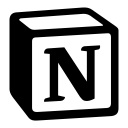Asana vs Monday: Choosing the right tool for your business
- 01Asana vs Monday: overview
- 02What's the difference between Asana and Monday?
- 03Asana pros and cons
- 04Monday pros and cons
- 05Asana compared to Monday
- 06Monday compared to Asana
- 07Features comparison
- 08Asana vs Monday: Which is the best for your business?
- 09Promotions on Collaboration software
- 10Alternatives to Asana & Monday
Access up to $2,400 savings on Asana & $160 on Monday
Access up to $2,400 savings on Asana & $160 on Monday
Effective project management is essential for streamlining workflows, fostering collaboration, and supporting remote work. The solution? Project management software. These tools provide a centralized hub for project-related information and communication, improving task management within your business.
However, with a range of tools to choose from, it can take time to find the right one for your needs. In this article, we aim to simplify your decision-making process by comparing two popular solutions—Asana vs Monday. After this in-depth look at their key features, pricing, and differences, you can confidently assess which platform best aligns with your project management goals.
Asana vs Monday: overview
Asana and Monday.com are prominent players in the field of project management software, each offering unique features and advantages tailored to different organizational needs.
Asana is renowned for its robust task management capabilities and collaboration tools. It provides a comprehensive platform for organizing tasks, setting priorities, and tracking project progress. On the other hand, Monday.com is celebrated for its intuitive and customizable workspaces. It offers a highly visual and flexible platform that allows users to design their workflows and project boards to fit their specific needs.
Now, let's dive into the Asana vs. Monday.com comparison to help you make an informed decision when selecting the right project management software for your particular requirements.
What's the difference between Asana and Monday?


Asana and Monday are both project management tools designed to automate workflows and foster collaboration among team members, regardless of their location. Both platforms include robust task management features to assign and track tasks, ensuring projects stay on track and team members meet deadlines. However, several differences between them may guide your choice of the best software for your needs.
One of these main differences is the focus of both apps. While Asana emphasizes task management and collaborative features, Monday delivers on end-to-end project management. Asana lets you create tasks and subtasks, complete with descriptions and due dates. It offers strong collaboration features, including assigning tasks to team members and sending status updates. Monday’s features are broader, offering an end-to-end project management solution. The platform lets you create customized project boards for projects, tasks, and workflows. You can tailor these to a range of teams and projects. It includes detailed project management features. For example, Monday offers built-in invoicing, while Asana requires integration with third-party billing software.
The platforms’ approach to integrations also differs. With Asana, you can access all integrations with any plan, including the free version. There are no limits on the number of integrations you can use every month. Compared to Asana, Monday’s integrations are only available with its Standard plan and higher. The platform also limits the number of integration actions you can complete each month. For example, Monday’s standard plan includes up to 250 integration actions, which may be sufficient for many users. For more extensive needs, these increase to 25,000 with its Pro plan. A significant difference between the tools’ free plans is also worth noting. While Asana’s free plan accommodates up to 10 users, Monday caps its free plan at 2 users.

6 months free on the Advanced plan on Asana
Get 6 months free on the Advanced plan on Asana and up to $2,400 savings with Secret.
Asana pros and cons
What are the advantages of Asana?
- Robust task management: Asana excels in task management, offering a wide range of features to create, assign, and track tasks. You can set due dates, priorities, and dependencies, making it easy to manage complex projects.
- Collaborative workspace: Asana provides a collaborative environment where team members can communicate, share files, and comment on tasks. It enhances team communication and transparency.
- Project visualization: Asana offers different views like boards, lists, and timelines, allowing you to visualize your projects in various ways. This versatility helps teams choose the most suitable view for their workflow.
- Automation: Asana includes automation features that allow you to automate repetitive tasks and workflows, saving time and reducing manual work.
- Integration: Asana integrates with a wide range of other tools and apps, such as Google Workspace, Microsoft Teams, and Slack, making it easier to connect your project management with your existing software stack.
What are the disadvantages of Asana?
- Learning curve: Some users may find Asana's features overwhelming, especially if they are new to project management software. It can take time to learn how to use all the tools effectively.
- Cost: While Asana offers a free version, its more advanced features and premium plans come with a cost. For larger teams or organizations, this can be a significant expense.
- Limited reporting: Asana's reporting capabilities are somewhat basic compared to some other project management tools. If you require in-depth analytics, you might need to rely on third-party integrations.
- Complex projects: For very complex projects with numerous dependencies and intricate workflows, Asana might not provide the level of detail and control some users need.
- Notifications overload: Users may receive a high volume of notifications, which can become overwhelming, particularly in larger teams. Customizing notifications is possible but requires some effort.
Compare Asana to other tools
Monday pros and cons
What are the advantages of Monday?
- Visual and intuitive interface: Monday.com's highly visual and customizable interface is easy to grasp, making it accessible for team members regardless of their technical proficiency. Users can design their workflows and boards to suit their specific needs.
- Customization: Monday.com offers extensive customization options, allowing teams to create unique boards, templates, and workflows to match their project management requirements precisely. This adaptability makes it suitable for various industries and use cases.
- Collaboration and communication: The platform facilitates effective team collaboration through features like @mentions, comments, file sharing, and activity tracking. It promotes transparency and keeps all communication within the context of tasks and projects.
- Integration capabilities: Monday.com integrates with a wide range of third-party tools and services, including popular apps like Slack, Google Workspace, and Trello. This enables users to connect their project management with their existing software stack.
- Automation: Monday.com offers automation features that help streamline repetitive tasks, saving time and reducing manual work. Users can create custom automation rules to trigger actions based on specific conditions.
What are the disadvantages of Monday?
- Cost: Monday.com's pricing can be relatively high, especially for larger teams or organizations. While they offer a free trial, premium plans and advanced features come with a cost that may not be budget-friendly for smaller businesses.
- Limited reporting and analytics: Some users may find the reporting and analytics capabilities of Monday.com to be somewhat limited compared to specialized reporting tools. For organizations that require in-depth data analysis, additional tools might be necessary.
- Learning curve for complex workflows: While the platform is intuitive for basic usage, it can become complex when managing intricate workflows or projects with numerous dependencies. Advanced customization might require a learning curve.
- Mobile app limitations: The mobile app's functionality may not be as extensive as the web version, which could be limiting for users who need to manage their projects on the go.
- Lack of time tracking: Monday.com does not offer built-in time tracking features. Users needing detailed time tracking and reporting would need to rely on integrations with third-party time tracking apps.
Compare Monday to other tools
Asana compared to Monday
Asana and Monday.com are both popular project management tools, but they cater to different needs. Asana excels in task management and automation, offering a robust platform for organizing and prioritizing tasks, making it suitable for teams seeking structure.
In contrast, Monday.com boasts a highly visual and customizable interface, ideal for those who prefer flexibility and creativity in their workflows. While Asana prioritizes collaboration and communication, Monday.com emphasizes visual project tracking and customization. Choosing between them depends on your team's preferences; Asana for structured task management, or Monday.com for visual and adaptable project organization.
Is Asana better than Monday?
Determining whether Asana is better than Monday.com depends on your specific project management needs. Asana is renowned for its task management and automation capabilities, making it a solid choice for structured workflows and team collaboration. Conversely, Monday.com's strength lies in its visual and highly customizable interface, which suits creative and adaptable project tracking.
Your preference should align with your team's priorities—Asana for structured task management or Monday.com for a more visual, customizable approach. Ultimately, the choice hinges on which tool best complements your workflow and team dynamics, making one potentially better than the other for your unique requirements.
What is Asana best used for?
Asana is best used for efficient task and project management. It excels at organizing and prioritizing tasks, assigning responsibilities, and tracking progress, making it a valuable tool for teams and businesses of all sizes. Its robust features, including task dependencies, due dates, and project timelines, make it ideal for structured and collaborative work environments.
Asana is particularly beneficial for teams that require clear communication, transparency, and automation of repetitive processes. Whether you're managing complex projects, coordinating team efforts, or simply staying organized with daily tasks, Asana provides a versatile platform to enhance productivity and streamline workflow management.
Can Asana replace Monday?
Whether Asana can replace Monday.com depends on your specific needs and preferences. Asana offers robust task and project management capabilities, making it a suitable choice for teams seeking structured workflows and collaboration. However, Monday.com is known for its highly visual and customizable interface, which may be preferable for those who prioritize creativity and adaptability in their project tracking.
Switching between the two tools would involve assessing your team's requirements, considering factors such as workflow style, communication needs, and reporting preferences. While Asana can be a powerful project management solution, determining if it can replace Monday.com should be based on a careful evaluation of your unique needs.
Is Asana cheaper than Monday?
Asana and Monday.com offer various pricing plans, and whether Asana is cheaper than Monday.com depends on your team's size and specific needs. Asana’s pricing structure provides a free basic plan and a premium plan with additional features at a per-user cost. In contrast, Monday.com offers a free trial and multiple pricing tiers, with costs increasing as you add more users and access advanced features.
Smaller teams may find Asana's pricing more budget-friendly, while larger organizations might need to carefully compare plans to determine which platform offers the best value for their requirements. Ultimately, the cost comparison between Asana and Monday.com is contingent on your team's size and feature preferences.
Is there a better Collaboration software than Asana?
Whether there's a "better" software than Asana depends on your specific project management needs and goals. Asana is renowned for its robust task management, collaboration, and automation features, making it a solid choice for many teams and businesses.
However, alternatives to Asana like Trello, Monday.com, and Wrike may better suit certain organizations. Trello is known for its simplicity and visual approach, while Monday.com offers high customizability. Wrike provides a versatile platform for various project management styles. The determination of the "better" software hinges on your unique workflow, team dynamics, and project requirements.
6 months free on the Advanced plan on Asana
Get 6 months free on the Advanced plan on Asana and up to $2,400 savings with Secret.
Monday compared to Asana
Monday.com and Asana are popular project management tools, each offering distinct advantages. Monday.com stands out for its highly visual and customizable interface, ideal for creative teams and those who prefer flexible workflows. It allows users to design boards and workflows to suit their specific needs.
On the other hand, Asana excels in structured task management and automation, making it a great choice for teams that require clear organization and collaboration. While Monday.com emphasizes visual project tracking and customization, Asana prioritizes task management and project structure. The choice between them depends on your team's preferred style of project management and specific needs.
Is Monday better than Asana?
Determining whether Monday is better than Asana depends on your project management requirements and preferences. Monday.com offers a highly visual and customizable interface, appealing to teams seeking creativity and adaptability in their workflows. It empowers users to design their boards and processes to fit their unique needs.
Conversely, Asana excels in structured task management and automation, making it an excellent choice for teams that prioritize organized collaboration. The comparison hinges on your team's project management style and specific needs. Assessing factors like workflow, communication preferences, and reporting requirements will help you determine which tool is better suited to your objectives.
What is Monday best used for?
Monday.com is best used for visual and customizable project management. Its highly adaptable interface suits teams and businesses looking for creative and flexible workflows. It excels in diverse applications, from marketing campaigns and software development to event planning and content creation.
Monday.com's visual boards and customizable templates allow users to tailor their project tracking to specific needs. It promotes efficient collaboration, transparent communication, and real-time progress monitoring. Whether managing complex projects, tracking tasks, or organizing team activities, Monday.com offers a versatile platform to enhance productivity and adapt to various workstyles and industries.
Can Monday replace Asana?
Whether Monday can replace Asana depends on your project management needs and preferences. Asana is renowned for its robust task management, collaboration, and automation features, making it a solid choice for many teams and businesses.
However, Monday.com offers a highly visual and customizable interface, ideal for creative teams and those who prefer flexible workflows. It empowers users to design boards and processes to fit their unique needs. The decision to replace Asana with Monday.com should be based on a careful evaluation of your team's specific requirements, preferred project management style, and the features that align best with your objectives.
Is Monday cheaper than Asana?
The cost comparison between Monday.com and Asana depends on your team's size, feature requirements, and budget constraints. Both platforms offer various pricing tiers. Monday.com offers a free trial and pricing that increases with more users and advanced features. Asana provides a free basic plan and premium plans at a per-user cost.
For smaller teams, Asana may be more budget-friendly, while larger organizations might find Monday.com's pricing structure more favorable. Ultimately, determining whether Monday.com is cheaper than Asana necessitates a thorough examination of your specific needs and available budget to select the tool that offers the best value for your project management requirements.
Is there a better Collaboration software than Monday?
Determining whether there's a superior software to Monday.com hinges on your specific project management needs and objectives. Various alternatives cater to diverse business requirements.
Alternatives to Monday.com include Asana, Trello, Wrike, and ClickUp, each offering unique strengths. For instance, Trello is known for its simplicity and visual approach, while Wrike provides a versatile platform for various project management styles. The choice of the optimal software depends on your individual circumstances, budget, and feature priorities. A thorough evaluation of these factors is essential to select the tool that best aligns with your project management goals and enhances your team's workflow efficiency.
1 month free on Monday
Get 1 month free on Monday and up to $160 savings with Secret.
Features comparison
Monday Excels in Real-time Collaboration Compared to Asana

Collaboration is a critical aspect of effective project management, and both Asana and Monday.com offer collaboration tools. However, there are distinctions in the depth and real-time nature of their collaborative features.
Monday.com takes the lead in this regard, offering a centralized platform that fosters real-time collaboration. It includes features like real-time chat, file-sharing, and brainstorming capabilities. For instance, team members can engage in live discussions about project updates, share important files seamlessly, and brainstorm ideas within the platform. This synchronous collaboration ensures that all team members, regardless of their physical location, can stay in sync and make real-time decisions.
While Asana also facilitates shared projects and in-app communication, it may not provide the same level of real-time, synchronous collaboration as Monday.com. For teams that prioritize immediate interaction and seamless communication, Monday.com's collaboration features can be a valuable asset in optimizing workflow efficiency and team coordination.
Asana and Monday.com are On Par with Automating Repetitive Tasks

Automation is a key component of modern project management, and both Asana and Monday.com provide robust tools to streamline repetitive tasks and enhance productivity.
Asana empowers users to create custom rules and forms for automation. For instance, you can automate the process of sending and receiving work requests by setting up rules that trigger specific actions based on task parameters. If a task reaches a certain status or due date, Asana can automatically assign it to the appropriate team member or send out notifications, reducing the risk of errors and ensuring that tasks are addressed promptly.
Similarly, Monday.com offers automation features that enable you to set up alerts and email notifications for various task events, such as due dates, task completions, and status changes. These automated notifications help keep team members informed and aligned, ensuring that everyone is on the same page and boosting overall productivity.
Asana Reigns Supreme in Project Timeline Visualization Over Monday.com

Effective project management often relies on clear visual representations of project schedules and dependencies. In this aspect, Asana and Monday.com offer different degrees of depth and insight into project timelines.
Asana's timeline view is a standout feature, allowing users to create visual representations of project schedules. This feature provides a quick and comprehensive overview of tasks, timelines, and dependencies, facilitating efficient project management. For instance, teams can easily identify potential bottlenecks, adjust schedules, and ensure projects stay on track. This visual clarity is particularly valuable for complex projects with multiple dependencies.
While Monday.com also offers visualization tools like Kanban and Gantt charts to organize projects over time, it may not provide the same level of insight into project timelines and dependencies as Asana does. Asana's timeline view offers a more detailed and informative perspective on project scheduling, making it a strong choice for teams that prioritize comprehensive timeline management.
Asana Excels Ahead of Monday for User-Friendliness

When evaluating the usability of Asana and Monday, both tools have their distinct strengths. However, in a direct comparison, Asana stands out for its user-friendly interface.
Asana prioritizes user experience, providing an intuitive platform that allows users to navigate effortlessly. Whether you're handling task management, file sharing, or team collaboration, all functions are easily accessible with just a few clicks. Its sleek design and straightforward functionalities streamline onboarding, significantly reducing the learning curve for teams.
In contrast, Monday offers a feature-rich platform but may require a deeper understanding of project management concepts for full utilization. This can result in a steeper learning curve, particularly for new users, compared to the more intuitive Asana interface. While both tools are powerful, Asana's user-friendliness makes it an excellent choice for teams seeking an easier transition and smoother workflow management.
Monday.com Outperforms Asana in Data Visualization

In the realm of data visualization and analysis, Monday.com exhibits an advantage over Asana, offering dynamic and interactive tools that enable users to gain valuable insights and make data-driven decisions.
Monday.com's standout feature is its ability to create dynamic charts and graphs that provide a bird's eye view of projects. These visual representations allow teams to analyze data, track progress, and identify trends swiftly. For example, a marketing team can use interactive charts to monitor campaign performance and adjust strategies accordingly, all within the platform.
In contrast, while Asana provides functionality for tracking workloads and task progress, its reporting features may not offer the same depth and visual richness as Monday.com. Asana's reporting is valuable for managing tasks and projects but may not provide the comprehensive, visual nature of data analysis that Monday.com offers.
Monday Leads Over Asana in Integration Variety

In the realm of SaaS and interconnected workflows, the power of seamless integrations cannot be overstated. Both Asana and Monday recognize this need and offer integration options, albeit with varying degrees of depth and versatility.
Monday stands out for its exceptional integration potential. With support for over 200+ third-party app integrations, including popular tools such as Slack, Google Drive, Gmail, and Jira, it provides a comprehensive solution for businesses with diverse software stacks. For example, a marketing team can easily connect their project management in Monday with their communication in Slack, streamlining collaboration.
In contrast, while Asana also offers a range of integrations, it may not match the extensive breadth of Monday's ecosystem. Businesses requiring a multitude of integrations to enhance their workflow efficiency may find Monday's integration capabilities more robust and accommodating. When it comes to interconnecting your software ecosystem, Monday's extensive integrations can provide a significant advantage.
Asana Surpasses Monday for Customizing Processes

When it comes to tailoring your project management processes to your unique requirements, Asana and Monday.com offer differing levels of customization.
Asana excels in the realm of customization, providing a dedicated feature for creating highly personalized workflows. Whether you're overseeing IT requests, product development, or creative projects, Asana's workflow generator allows you to build processes that precisely match your needs. For instance, you can design a workflow that includes specific approval stages for product development, ensuring efficient quality control.
While Monday.com also allows for customization, it may not match the depth and personalized specificity that Asana offers. Asana's emphasis on creating workflows tailored to diverse use cases makes it a powerful choice for teams seeking meticulous customization to optimize their project management.
Subscribe to our newsletters.
No FOMO here. Stay up-to-date on all the latest deals and news with our monthly newsletter straight to your inbox like 122,000+ entrepreneurs (+ Get 10% off on on our Premium Membership!)
Asana vs Monday: Which is the best for your business?
Asana is the best tool for you if:
- You require robust task management and automation capabilities for streamlined project workflows, Asana is the ideal choice.
- Your team values clear communication and collaboration within a structured framework, Asana excels in fostering teamwork.
- You prefer a user-friendly interface that simplifies complex project management, Asana's intuitive design is a great fit.
- You seek a platform with extensive integration options to connect seamlessly with your existing software stack, Asana offers versatile compatibility.
- You need a tool that provides detailed task tracking, prioritization, and dependencies to keep projects organized, Asana is a top solution.
Monday is the best tool for you if:
- You thrive on creative, highly customizable workflows, Monday's flexible interface allows you to design and adapt your project management processes to your exact needs.
- Your team values real-time collaboration through chat, file-sharing, and brainstorming features, Monday fosters seamless communication and remote teamwork.
- You're seeking a comprehensive solution with a wide range of third-party app integrations, Monday's ecosystem connects your software stack effortlessly.
- You prioritize dynamic data visualization and analysis through interactive charts and graphs, Monday offers powerful tools for informed decision-making.
- You require a centralized platform to manage projects and tasks efficiently, Monday.com provides a feature-rich solution for optimizing your workflow.

6 months free on the Advanced plan on Asana
Get 6 months free on the Advanced plan on Asana and up to $2,400 savings with Secret.
Alternatives to Asana & Monday
Promotions on Collaboration software
Start saving on the best SaaS with Secret.
Secret has already helped tens of thousands of startups save millions on the best SaaS like Asana, Monday & many more. Join Secret now to buy software the smart way.



















